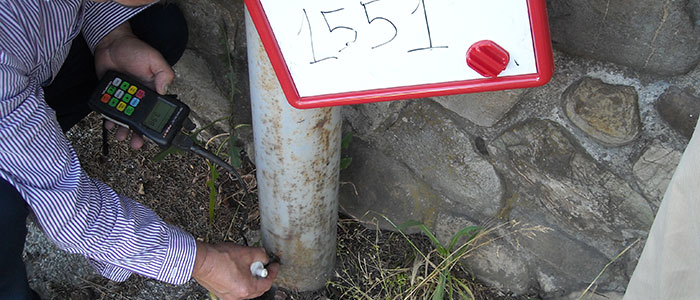Ultrasonic thickness testing (UTS) Technique used for thickness measurements
Ultrasonic method can also be used for the verification of the residual thickness of pipes, plates, pressure equipment, metal structures or poles of public lighting, expecially in case of corrosive phenomena that, causing a decrease of the wall, can carry the rupture of the sheet.
Using an instrument called a feeler gauge and a probe longitudinal waves, the ultrasonic pulse is propagated in the affected area. A display shows the thickness detected by the device.
Using an instrument called a feeler gauge and a probe longitudinal waves, the ultrasonic pulse is propagated in the affected area. A display shows the thickness detected by the device.
Main uses:
PED checks of pressure equipment, water and gas pipes, corrosion control of public lighting poles.Advantages:
You can measure the thickness in areas where it is not possible to access the two outer surfaces.Disadvantages:
The method can only be used on smooth surfaces that allow the probe to adhere perfectly to the piece.Available equipment:
- NR 2 OLYMPUS PANAMETRICS MG2 XT
- NR 2 SADT SA 40
Main reference standards:
- UNI EN 14127
- ASTM E797 / E797M
- ASME V art. 23



